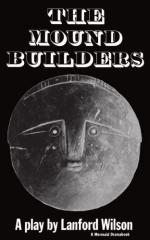OUR HISTORIC ERA
saw the expiring blaze of this tremendous conflagration just as the French arrived in Canada. Cartier saw a race in 1535 in Hochelaga, who are believed to have had Brachycephalic crania, who were agriculturists, used at least implements of metal, dwelt in large houses, made pottery and were constructive in tendency. In 1608 when Champlain visited the same spot, there were none of the Hochelagans remaining. This remnant of the Toltecans had been swept out of existence between the Algonquin wave from the east and the Iroquois from the southwest. The French heard of a similar race called the Eries and of another the Neutrals, who had the same habits and customs as the vanished Hochelagans, but who had been visited by the scourge of the Iroquois on the Ohio as they ascended it, and had perished. Thus from the twelfth century, the time set for the irruption of the savage tribes from New Mexico, two or three centuries would probably suffice to sweep away the last even of the farthest north Takawgamis. This, say the fifteenth century, would agree very well, not only with time estimated by the early French explorers, but also with the tradition of the Crees who claim that for three or four centuries they have lived sole possessors upon the borders of Lake Superior, Lake of the Woods, and Lake Winnipeg. Our theory then is that the mound builders occupied the region of Rainy and Red Rivers from the eleventh to the fifteenth centuries. Their works remain.
HOW OLD
then are the mounds? If our conclusions are correct the oldest mound in our region cannot exceed 800 years, and the most recent must have been completed upwards of 400 years ago. Look at further considerations, which lead to these conclusions. We learn, that 200 years ago, viz.: in 1683, the “Clistinos” and “Assinipouals” (Crees and Assiniboines) were in their present country. The Crees were at that time in the habit of visiting both Lake Superior




